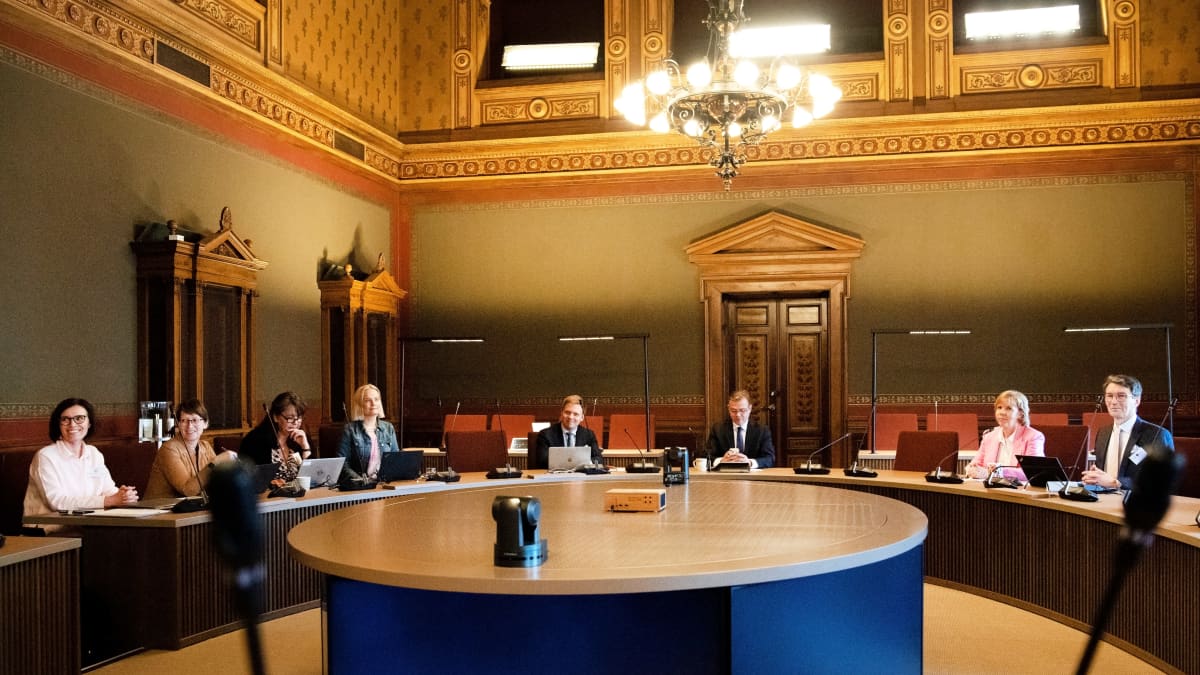Government formation talks between the National Coalition Party, the Finns Party, the Swedish People’s Party and the Christian Democrats entered their fourth week on Tuesday, with the focus now turning to the potentially divisive topics of immigration and climate policy.
If the four parties cannot find a consensus on these difficult issues, it is highly unlikely that they will be able to produce a programme for government.
The Finns Party in particular have called for a significant tightening of immigration policy right across the board while the Swedish People’s Party have long argued that Finland needs more immigration, not less, in order to bridge an ever-widening dependency ratio gap.
Negotiators representing the parties at the talks have submitted questions to the Interior Ministry on how Finland might tighten immigration legislation and the level of savings — or costs — that might be expected, and the ministry has provided documented replies.
Yle obtained the documents through a freedom of information request, but the ministry also published the papers on its own initiative.
In terms of the proposals regarding asylum and temporary protection applicants — but not related to work-based immigration — the ministry noted that some of the suggestions put forward would require additional funding or would incur further costs, rather than leading to the Finnish state making savings.
The ministry documents revealed that party negotiators have enquired about the possibilities of tightening asylum procedures under EU law. For example, they asked whether Finland could introduce an EU minimum level for the intake of refugees or use an accelerated asylum procedure at the borders.
Ministry officials have also looked at requests and enquiries from the negotiators including: reducing the length of residence permits for asylum seekers and people on temporary protection visas, reviewing residence permit extensions, introducing new conditions for family reunification, and the possibility of distributing food vouchers instead of or at a lower rate than the so-called reception allowance.
Party negotiators have further asked for clarification on the conditions under which refugee status or temporary protection status could be withdrawn or terminated.
The replies from the Interior Ministry show that some of the requested measures aimed at tightening immigration policy conflict with EU law or are contrary to international agreements.
Ministry offers suggestions
The talks to form Finland’s next government are taking place against the backdrop of the incoming administration needing to find about 6 billion euros in state savings over this parliamentary term.
The Ministry of Finance has proposed that Finland’s spending on immigration should be reduced by 100 million euros per year to help meet this target.
In its report, the ministry suggested that savings of 20 million euros could be made by cutting the daily spend on reception centres, while a further 80 million euros could be found by reducing the number of people in the reception system. This second figure would fall under the responsibility of the Ministry of Economic Affairs and Employment, which aims to integrate newcomers into Finnish society and working life.

Talks aimed at forming the next coalition government have been taking place at the House of the Estates in Helsinki since 2 May. Image: Tiina Jutila / Yle
The ministry further noted that several million euros could be cut from the budget earmarked for the return of rejected asylum seekers, because that money has not been used.
The Interior Ministry however found that these proposed savings are not in all respects realistic or in line with the objectives.
For example, outsourcing reception centres and tendering for reception centre services will not bring savings in the short term. Furthermore, the ministry noted that the number of Ukrainian people in need of temporary protection is still increasing due to the ongoing war.
The latest figures from the Finnish Immigration Service Migri, released on Tuesday, show that over 55,000 Ukrainians have so far applied for temporary protection status in Finland.
The Interior Ministry said that savings could instead be made by improving the functionality of Finland’s asylum and temporary protection system. Decisions on applications for asylum should be made within six months, the ministry said, so that new arrivals would be in the system for as short a time as possible. This would require the Finnish Immigration Service Migri receiving additional funding.
The ministry’s documents also showed that reducing Finland’s refugee quota by 100 people would reduce state spending by almost 11 million euros over four years. Finland has a refugee quota of 1,050 people this year, and that figure has fluctuated in recent years between 750 and 1,500 people.
Breaking the cycle of re-applications
The Interior Ministry further noted that savings could be made by reducing the number of times a rejected asylum seeker could re-apply.
According to the ministry’s data, there are some people in the system who have submitted up to 15 asylum applications. A large proportion of those who have filed multiple applications are people who arrived in Finland in 2015 or 2016, the ministry noted, adding that such situations should be permanently resolved after that many years.
Different ways of dealing with the immigration question have also been sought from other EU and Nordic countries, including Denmark, Germany, France and Italy.

Comments are closed, but trackbacks and pingbacks are open.